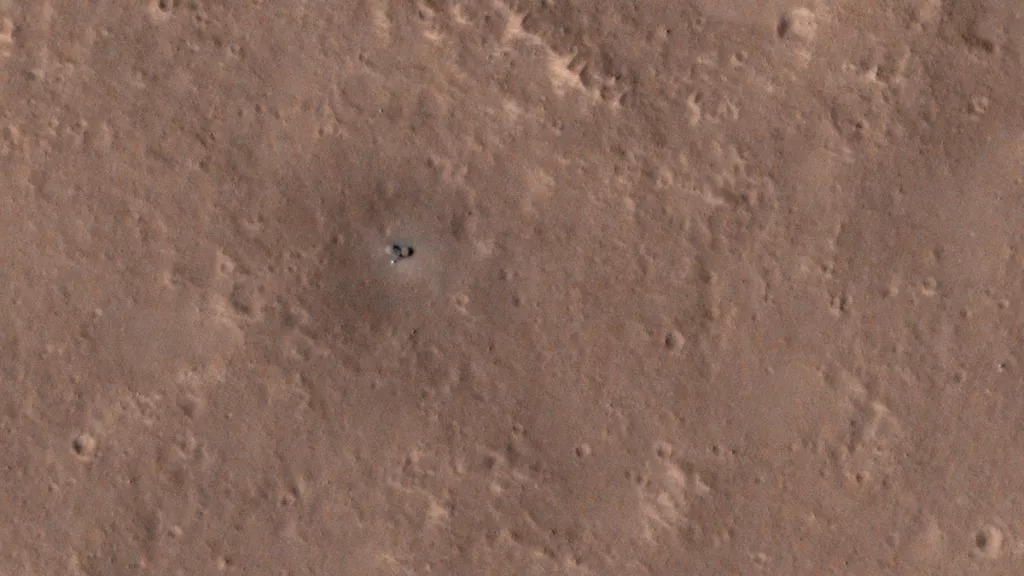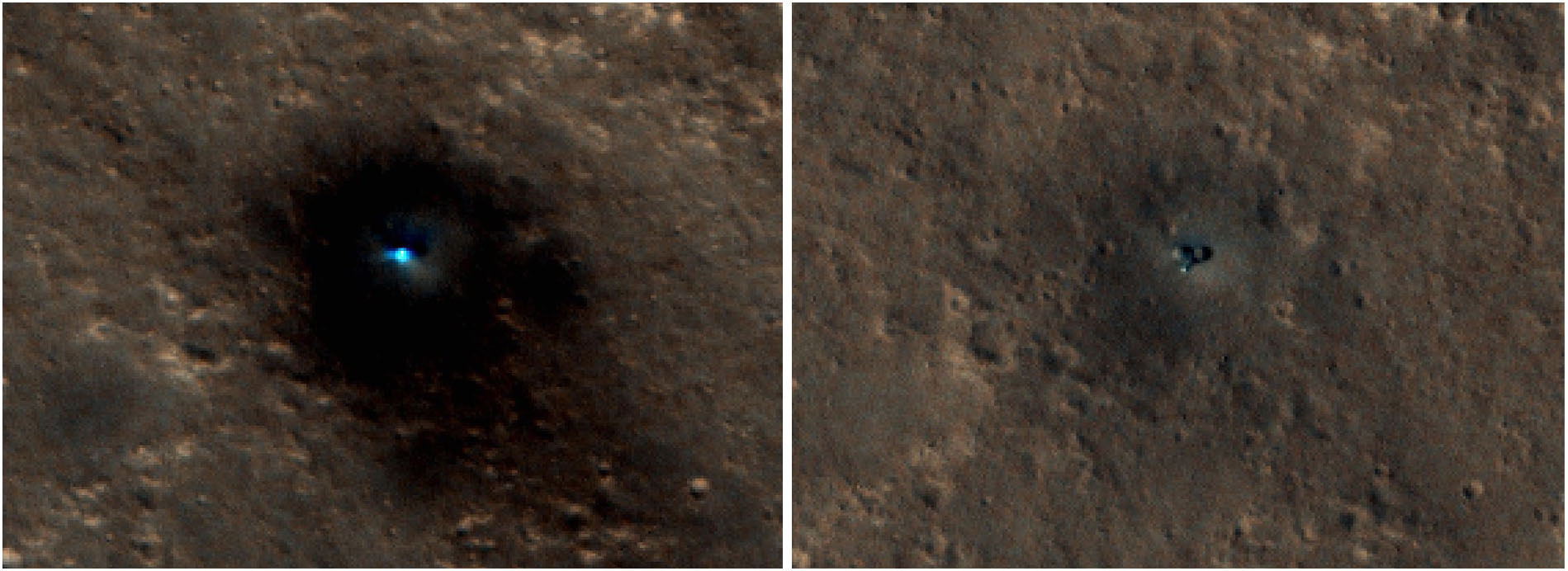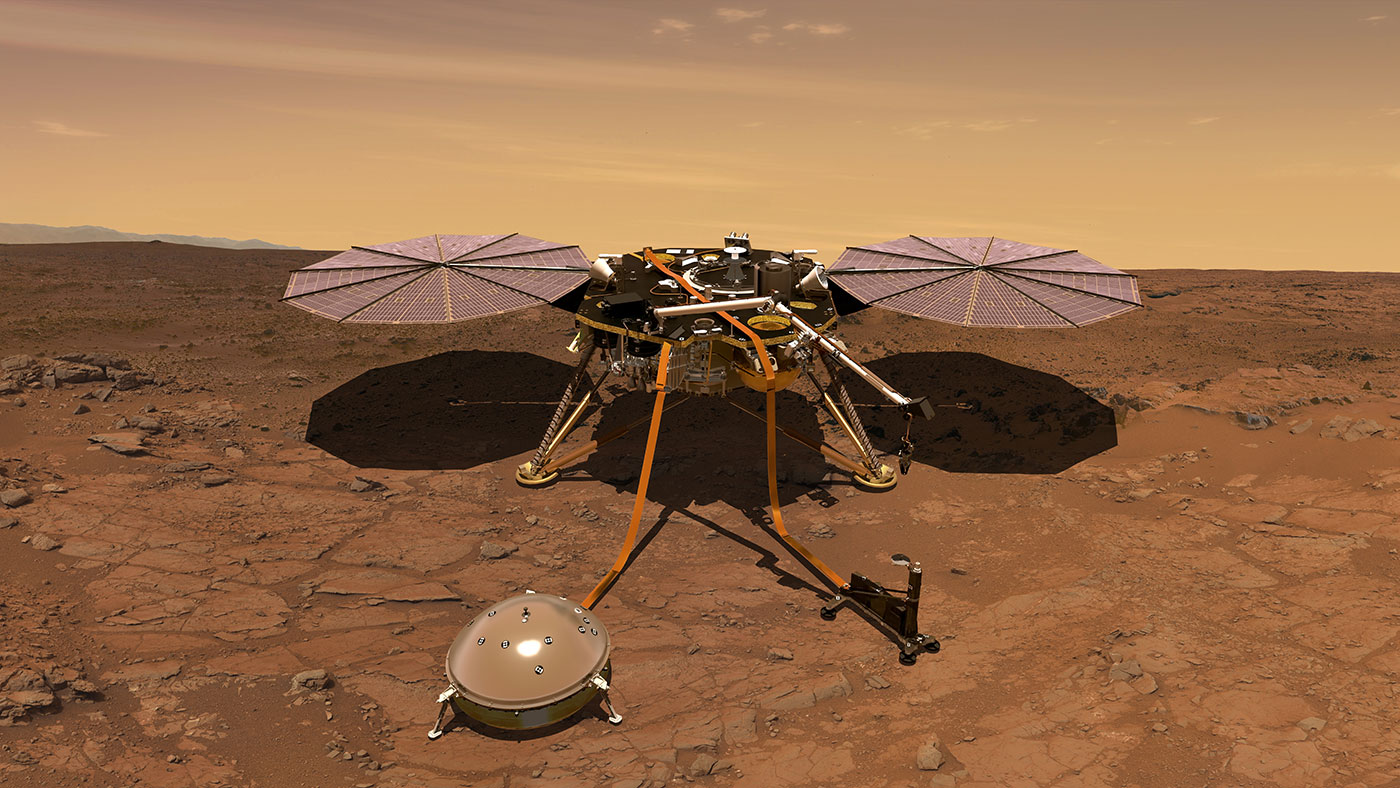The layer of dust on NASA’s InSight Mars landing module is so thick that it can even be seen from orbit. The red Martian regolith covering the landing module is visible in a high-definition image obtained on April 9, 2022 from the Mars Reconnaissance Orbiter (MRO).

The spacecraft’s HiRISE camera is often tasked with taking detailed images of spacecraft on the surface of Mars, especially when they are in difficult conditions. The Martian InSight landing module briefly went into power-saving mode in January after its solar panels were covered with so much dust that the spacecraft was unable to receive enough power to resume operation. But in March, electricity supplies resumed.

“InSight solar panels produce almost as much energy as before the January storm. This level of power will allow the landing module to continue scientific operations during the summer, ” – a NASA official said.
Loss of electricity
InSight, which landed on Mars in 2018, initially operated at reduced power due to the accumulation of dust on its dual solar panels. In 2021, engineers managed to remove some dust from one panel. But the most frequent winds on the Red Planet regularly cover the panels with sand. Last year, NASA warned that power cuts could sometimes lead to a temporary shutdown of InSight during 2022. The problem is complicated by the natural orbital cycle of Mars. In 2021, the planet reached aphelion, which weakened the production of solar energy, while seasonal cycles of dust activity are only gaining momentum.

The InSight landing module, designed for one Martian year (687 Earth days), focuses on the study of the subsurface of Mars. In particular, by observing the earthquakes of the Red Planet, which were called “Mars earthquakes”.
We will remind that earlier it was predicted that InSight device is going to die out by the end of 2022.

